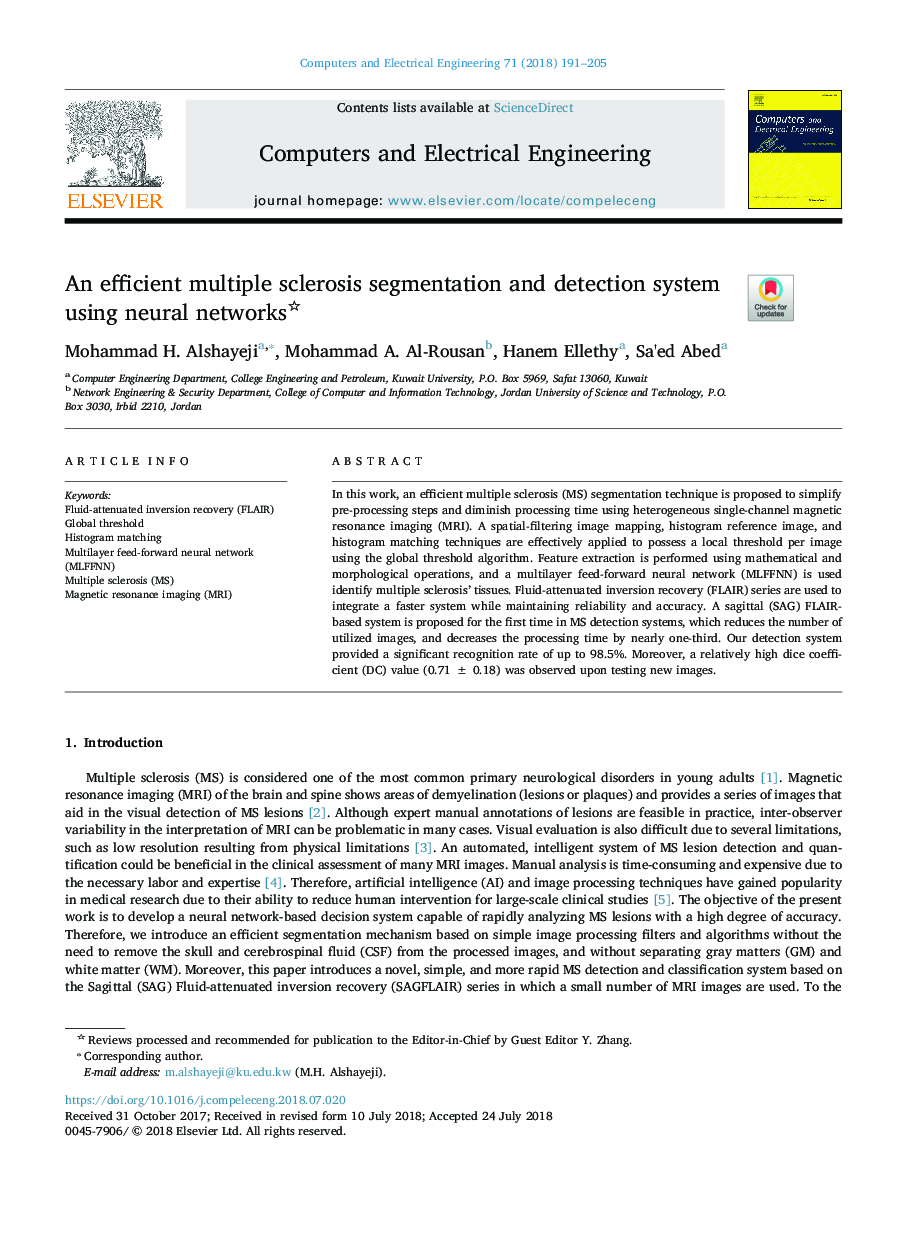| Article ID | Journal | Published Year | Pages | File Type |
|---|---|---|---|---|
| 6883246 | Computers & Electrical Engineering | 2018 | 15 Pages |
Abstract
In this work, an efficient multiple sclerosis (MS) segmentation technique is proposed to simplify pre-processing steps and diminish processing time using heterogeneous single-channel magnetic resonance imaging (MRI). A spatial-filtering image mapping, histogram reference image, and histogram matching techniques are effectively applied to possess a local threshold per image using the global threshold algorithm. Feature extraction is performed using mathematical and morphological operations, and a multilayer feed-forward neural network (MLFFNN) is used identify multiple sclerosis' tissues. Fluid-attenuated inversion recovery (FLAIR) series are used to integrate a faster system while maintaining reliability and accuracy. A sagittal (SAG) FLAIR-based system is proposed for the first time in MS detection systems, which reduces the number of utilized images, and decreases the processing time by nearly one-third. Our detection system provided a significant recognition rate of up to 98.5%. Moreover, a relatively high dice coefficient (DC) value (0.71â¯Â±â¯0.18) was observed upon testing new images.
Keywords
Related Topics
Physical Sciences and Engineering
Computer Science
Computer Networks and Communications
Authors
Mohammad H. Alshayeji, Mohammad A. Al-Rousan, Hanem Ellethy, Sa'ed Abed,
